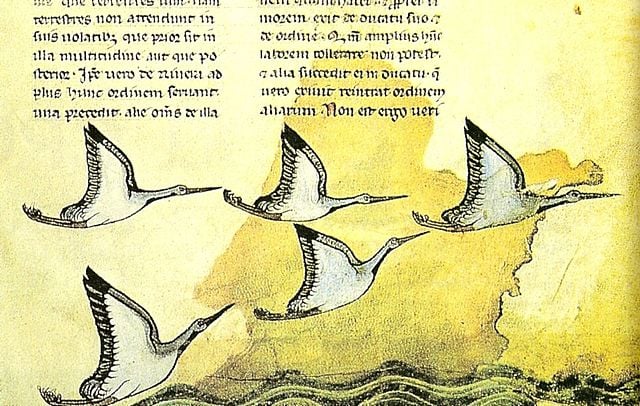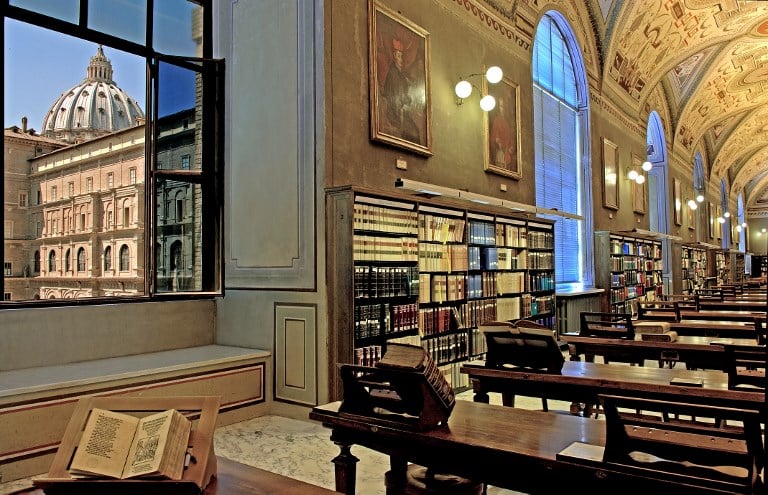Why an early Italian drawing of a cockatoo rewrites what we know about trade routes

Drawings of an Australasian cockatoo discovered on the pages of a 13th-century Italian manuscript suggest trade Down Under was flourishing as far back as medieval times, researchers said on Tuesday.
Four images of the white cockatoo feature in the Holy Roman Emperor Frederick II of Sicily's De Arte Venandi cum Avibus (The Art of Hunting with Birds), which dates from between 1241 and 1248 and is held in the Vatican Library.
The coloured drawings pre-date by 250 years what was previously believed to be the oldest European depiction of the bird, in Andrea Mantegna's 1496 altarpiece Madonna della Vittoria.
Heather Dalton, an honorary research fellow at Melbourne University, published an article about the cockatoo in Mantegna's painting in 2014, which was seen by three scholars at the Finnish Institute in Rome. They were working on De Arte Venandi cum Avibus and realized they had found much older depictions.

An image from The Art of Hunting with Birds.
A resulting collaboration between Dalton and trio revealed that Frederick's bird was likely to have been either a female Triton or one of three sub-species of Yellow-Crested Cockatoo. This means it originated from Australia's northern tip, New Guinea or the islands off New Guinea or Indonesia.
Essentially, it indicates that trade off Australia's north was taking place much earlier than previously thought, and linked into sea and overland routes to Indonesia, China, Egypt and beyond into Europe, Dalton said.
"Although our part of the world is still considered the very last to have been discovered, this Eurocentric view is increasingly being challenged by finds such as this," she said.
"Small craft sailed between islands buying and selling fabrics, animal skins and live animals before making for ports in places such as Java, where they sold their wares to Chinese, Arab and Persian merchants.
READ ALSO: Seven places to see wild flamingos in Italy
"The fact that a cockatoo reached Sicily during the 13th century shows that merchants plying their trade to the north of Australia were part of a flourishing network that reached west to the Middle East and beyond."
According to the National Library of Australia, the first documented landing by a European in the country was in 1606. There are claims of earlier landings by the Portuguese, Spanish, Chinese, Arabs and Romans, but there is little credible evidence.
Dalton said the Latin text next to one of the images revealed that the cockatoo was a gift from the fourth Ayyubid Sultan of Egypt to Frederick II, who referred to him as the 'Sultan of Babylon'.
She pieced together the journey a cockatoo would have taken from Australasia to Cairo and then on to Sicily –which would have been primarily overland and taken several years.
The findings are published in the current edition the Parergon Journal.
READ ALSO: US returns stolen 'Columbus Letter' to Vatican Library

Photo: Biblioteca Apostolica Vaticana/AFP
Comments
See Also
Four images of the white cockatoo feature in the Holy Roman Emperor Frederick II of Sicily's De Arte Venandi cum Avibus (The Art of Hunting with Birds), which dates from between 1241 and 1248 and is held in the Vatican Library.
The coloured drawings pre-date by 250 years what was previously believed to be the oldest European depiction of the bird, in Andrea Mantegna's 1496 altarpiece Madonna della Vittoria.
Heather Dalton, an honorary research fellow at Melbourne University, published an article about the cockatoo in Mantegna's painting in 2014, which was seen by three scholars at the Finnish Institute in Rome. They were working on De Arte Venandi cum Avibus and realized they had found much older depictions.

An image from The Art of Hunting with Birds.
A resulting collaboration between Dalton and trio revealed that Frederick's bird was likely to have been either a female Triton or one of three sub-species of Yellow-Crested Cockatoo. This means it originated from Australia's northern tip, New Guinea or the islands off New Guinea or Indonesia.
Essentially, it indicates that trade off Australia's north was taking place much earlier than previously thought, and linked into sea and overland routes to Indonesia, China, Egypt and beyond into Europe, Dalton said.
"Although our part of the world is still considered the very last to have been discovered, this Eurocentric view is increasingly being challenged by finds such as this," she said.
"Small craft sailed between islands buying and selling fabrics, animal skins and live animals before making for ports in places such as Java, where they sold their wares to Chinese, Arab and Persian merchants.
READ ALSO: Seven places to see wild flamingos in Italy
"The fact that a cockatoo reached Sicily during the 13th century shows that merchants plying their trade to the north of Australia were part of a flourishing network that reached west to the Middle East and beyond."
According to the National Library of Australia, the first documented landing by a European in the country was in 1606. There are claims of earlier landings by the Portuguese, Spanish, Chinese, Arabs and Romans, but there is little credible evidence.
Dalton said the Latin text next to one of the images revealed that the cockatoo was a gift from the fourth Ayyubid Sultan of Egypt to Frederick II, who referred to him as the 'Sultan of Babylon'.
She pieced together the journey a cockatoo would have taken from Australasia to Cairo and then on to Sicily –which would have been primarily overland and taken several years.
The findings are published in the current edition the Parergon Journal.
READ ALSO: US returns stolen 'Columbus Letter' to Vatican Library

Photo: Biblioteca Apostolica Vaticana/AFP
Join the conversation in our comments section below. Share your own views and experience and if you have a question or suggestion for our journalists then email us at [email protected].
Please keep comments civil, constructive and on topic – and make sure to read our terms of use before getting involved.
Please log in here to leave a comment.